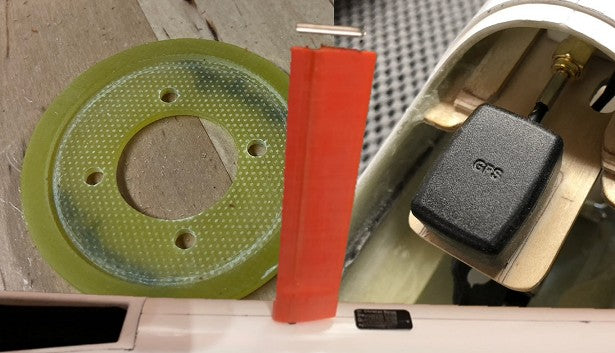I've been waiting for a new toy. All the servos, motor, prop, electronics have been sitting in a box for a few months. Things finally made it to NJ by way of CA.
I assembled all my parts. Model came with wing LDS servos installed. I have to do the rudder and elevator servo install. Motor and prop is on the nose and the battery pack is in there. All the parts are currently around 4600g and CG close to 104 where I'll start. MKS6625 installed in the wing. Lots of power since these are some pretty large surfaces. The plane barely squeezed onto my CG scale so I could check how close I would be to the CG range. It is good.

The wing tip LE's needed a little sanding. Better under sanded than over sanded. Tip panels are still a pain to get on I think they changed the tip angle from what was originally put into the wing tips. The mold angle appears around 6 degrees but the joiner is around 8 degrees. So the pins don't slide in as nicely as they could.
I have to get used to the really big vertical fin That is the one unusual bit.
Wing center, 1616g (Servos installed)
Left tip 454g (Servo installed)
Right tip 450g (Servo installed)
Nose 280g. It is a lot of fiberglass. About 1.5mm thick.
Stab 52g
Fin 90g , It is really big
Boom/wing mount 4726
Joiners 126g
Misc cables, screws 84g
Ballast is up to 8 bars that add up to 2300g
So with full ballast, it should be close to 7000g

I assembled all my parts. Model came with wing LDS servos installed. I have to do the rudder and elevator servo install. Motor and prop is on the nose and the battery pack is in there. All the parts are currently around 4600g and CG close to 104 where I'll start. MKS6625 installed in the wing. Lots of power since these are some pretty large surfaces. The plane barely squeezed onto my CG scale so I could check how close I would be to the CG range. It is good.
The wing tip LE's needed a little sanding. Better under sanded than over sanded. Tip panels are still a pain to get on I think they changed the tip angle from what was originally put into the wing tips. The mold angle appears around 6 degrees but the joiner is around 8 degrees. So the pins don't slide in as nicely as they could.
I have to get used to the really big vertical fin That is the one unusual bit.
Wing center, 1616g (Servos installed)
Left tip 454g (Servo installed)
Right tip 450g (Servo installed)
Nose 280g. It is a lot of fiberglass. About 1.5mm thick.
Stab 52g
Fin 90g , It is really big
Boom/wing mount 4726
Joiners 126g
Misc cables, screws 84g
Ballast is up to 8 bars that add up to 2300g
So with full ballast, it should be close to 7000g




Comment